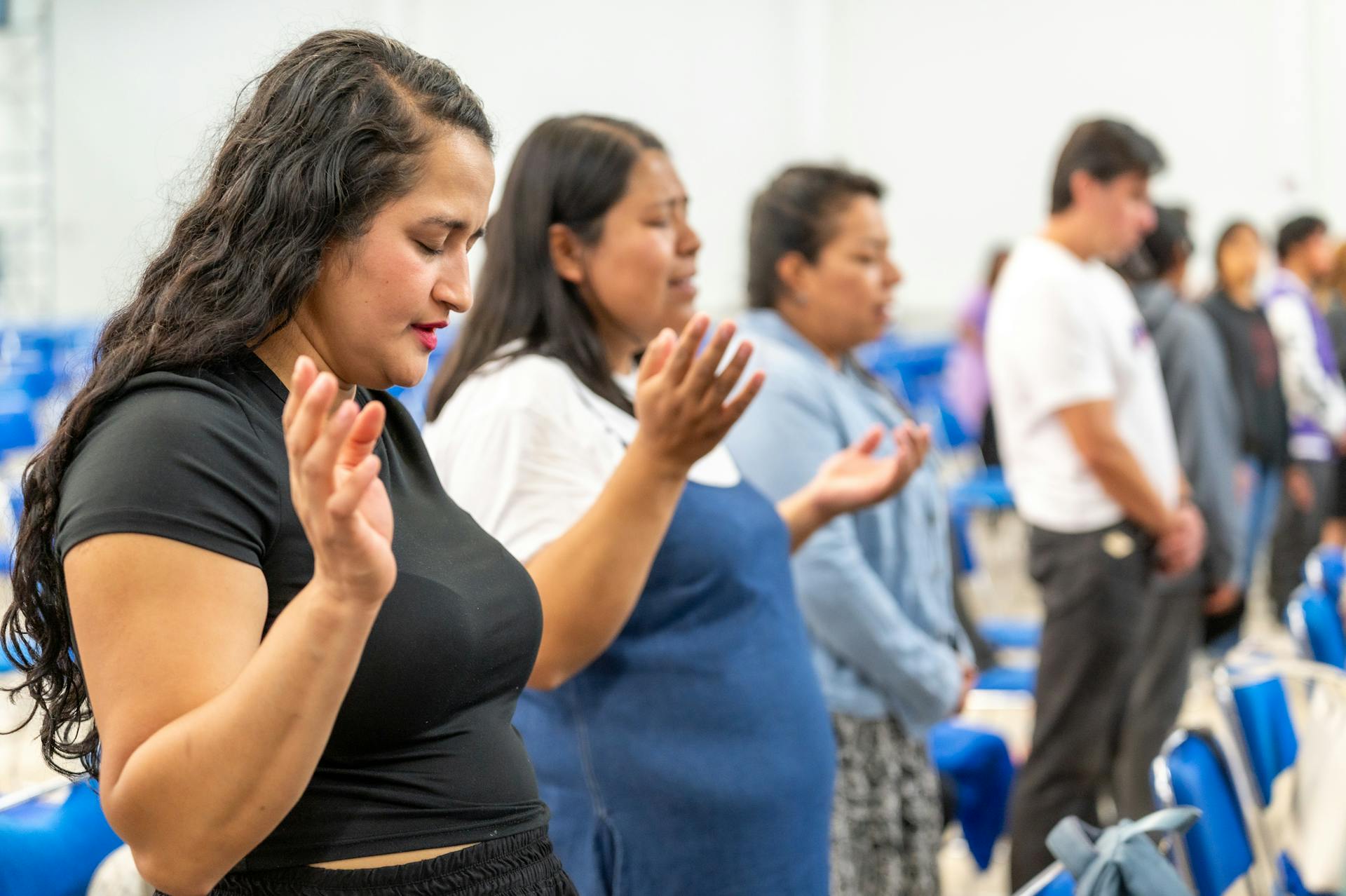The Changing Landscape of Missions
In recent decades, the global movement of people has reshaped communities across the United States. Refugees, immigrants, international students, and temporary workers have brought with them not only diverse languages and traditions, but also profound opportunities for the Church to live out its calling to love the nations—right at home.
While many churches devote significant resources to overseas missions, a growing number are beginning to recognize an often-overlooked mission field in their own neighborhoods: English as a Second Language (ESL) ministry. Teaching English is far more than an educational service; it is a powerful bridge for relationship, trust, and the gospel.
The Global Mission Field Has Come Home
According to the U.S. Census Bureau, over 67 million people in the United States speak a language other than English at home. Nearly half of them report speaking English “less than very well.” In many communities, that means there are thousands of people who struggle daily with basic communication—whether at a doctor’s office, their child’s school, or the grocery store.
Historically, the Church has gone to great lengths to reach people groups overseas, learning foreign languages and adapting to new cultures. Now, those same people groups live in the same cities, towns, and even neighborhoods as local congregations. What once required plane tickets and passports can now begin with a simple invitation to an English class held in a fellowship hall or Sunday school room.
This shift does not diminish the importance of foreign missions; rather, it expands the Church’s vision of what “missions” can look like. The Great Commission begins with “go,” but it does not always mean “go far.” Sometimes it means “go next door.”
The Human Side of Language Barriers
For many immigrants, language is the single greatest barrier to belonging. Without fluency, daily life can be filled with frustration, confusion, and isolation. Tasks that native speakers take for granted—filling out a job application, understanding a school notice, or talking with a neighbor—can become exhausting challenges.
Church-based ESL ministries meet this need in a uniquely compassionate way. By offering free or low-cost English classes, churches can:
- Demonstrate tangible love in action, meeting a felt need before speaking of spiritual matters.
- Build trust and community, often in contexts where newcomers may be wary of institutions or authority figures.
- Provide stability and dignity, especially for refugees and recent arrivals navigating unfamiliar systems.
An ESL classroom is a space where grace and patience speak louder than words. The kindness of a teacher, the warmth of a volunteer, or the simple act of conversation can leave a lasting impression of Christ’s love.
Why ESL Works as Outreach
Language learning is inherently relational. Unlike many service programs, ESL cannot be reduced to transactions or one-way charity. It depends on interaction, listening, and shared humanity. Every lesson invites stories, laughter, and cultural exchange. Students practice English by talking about their lives—their families, dreams, and struggles—and teachers learn as much as they teach.
This relational dynamic makes ESL ministry fertile ground for spiritual conversations that arise naturally and respectfully. A student who experiences genuine care through consistent interaction may become curious about why the church serves so freely. Over time, that curiosity can open doors to faith discussions, prayer requests, and eventual discipleship.
Moreover, English instruction provides a neutral and welcoming entry point. Many newcomers, especially those from non-Christian or restricted religious backgrounds, may be hesitant to attend a worship service. Yet they will come to an English class without fear or pressure. It is an invitation rooted in service, not persuasion.
A Biblical Mandate for Welcoming the Stranger
Scripture repeatedly emphasizes the call to welcome foreigners and sojourners. From the Old Testament commands to care for the alien and the stranger (Leviticus 19:33–34; Deuteronomy 10:19) to Christ’s parable of the Good Samaritan, God’s heart for the outsider is unmistakable.
In Matthew 25, Jesus identifies Himself with “the stranger” who was welcomed. Acts 17 reminds us that God “determined the times and boundaries of nations so that they might seek Him.” The global migration of people—often viewed through political or economic lenses—can also be seen as a divine opportunity for the Church to engage in local missions.
Teaching English, then, becomes more than a program; it becomes an act of obedience. It is a modern expression of biblical hospitality—opening not only church doors, but hearts and relationships.
The Practical Impact on Congregations
Beyond outreach, ESL ministry enriches the local church in unexpected ways. Congregations that launch ESL programs often report renewed vision and vitality. Serving international neighbors broadens perspectives, deepens compassion, and unites members around a common mission.
In practical terms, ESL ministries can:
- Engage members of all ages and skill levels. Volunteers don’t need to be certified teachers; training programs such as those offered by organizations like Literacy Missions or North American Mission Board provide accessible preparation.
- Connect church life to community life. Churches that host ESL classes often become known as community centers of hope and service, creating new partnerships with schools, social agencies, and local governments.
- Enhance cultural competence. Exposure to new cultures challenges assumptions and encourages humility—a valuable posture for the Church in a pluralistic society.
- Lay the groundwork for multicultural worship. As students and their families integrate into church life, congregations begin to reflect the diversity of the Kingdom of God.
Models and Methods of ESL Ministry
There is no single blueprint for ESL ministry; successful approaches vary based on context, resources, and demographics. However, several models have emerged:
- Community Classes:
Regularly scheduled classes (once or twice per week) that cover conversational English, grammar, and practical vocabulary. These are often supplemented by childcare, refreshments, and transportation assistance. - Conversation Cafés:
Informal gatherings—often over coffee or snacks—where participants practice speaking English through guided conversation. These require minimal structure but build strong relationships. - One-on-One Tutoring:
Personalized instruction for students who need flexible schedules or specific help. This model fosters deep mentorship and discipleship potential. - English Plus Bible Study:
Some programs integrate simple Bible stories or values-based lessons into the language curriculum, providing both linguistic and spiritual growth opportunities. - Family or Children’s ESL:
Programs that serve entire families or partner with existing children’s ministries, recognizing that language learning often happens best in community. - Partnership Models:
Churches can collaborate with local literacy councils, schools, or immigrant resource centers to share expertise and resources while maintaining a gospel-centered presence.
Challenges and Considerations
While the rewards are great, ESL ministry requires thoughtful planning and cultural sensitivity. Churches must approach this work with humility and respect for their students’ backgrounds.
Key considerations include:
- Gospel-Driven Cultural Sensitivity: Be respectful and discerning when engaging with students from diverse backgrounds, but never lose sight of the ultimate goal—sharing Christ. The purpose of ESL ministry is not merely to teach English but to create relational bridges for evangelism and witnessing. Building trust earns the right to be heard; once that trust is established, the message of salvation should be lovingly and clearly shared.
- Consistency: Students often rely on routine; canceled classes or unprepared volunteers can quickly erode credibility.
- Training: Volunteers need basic training in language acquisition, classroom management, and cross-cultural communication.
- Legal and Ethical Clarity: Classes should be open to all and transparent about any faith-based components.
- Sustainability: Long-term success depends on leadership support, volunteer retention, and integration into the church’s overall mission strategy.
The Opportunity Before Us
In many communities, the nations are already here—living, working, studying, and raising families just blocks from church buildings. The question is not whether there is a mission field nearby, but whether the Church will see it.
English teaching is not a trend or a social project; it is a deeply strategic and compassionate ministry opportunity. Through ESL, churches can simultaneously serve practical needs, cultivate authentic relationships, and bear witness to the hope found in Christ—all without crossing an ocean.
In a world increasingly divided by language, culture, and ideology, the Church has the opportunity to be the one place where understanding begins—not with perfect grammar, but with genuine love.
Suggested Next Steps for Churches
- Assess Community Needs: Contact local schools, libraries, or refugee resettlement agencies to understand local demographics and language needs.
- Explore Partnerships: Collaborate with established ESL ministries or denominational networks for training and curriculum support.
- Start Small, Stay Consistent: Even one weekly conversation group can make an impact.
- Pray for the Nations—Right Where You Are: Pray for students by name and for the relationships that develop through shared learning.
A Call to Action for Today’s Church
The need for ESL outreach is both immediate and immense. The nations have arrived on our doorsteps, seeking connection, communication, and belonging. When churches teach English, they do more than teach words—they open hearts to the truth of the Gospel.
Every conversation is a seed planted. Every class is an opportunity to reflect the love of Christ. Every student represents a soul who may one day carry the message of salvation back to family and friends across the globe.
In this light, ESL is not just an outreach program—it is a mission strategy, a discipleship path, and a fulfillment of the Great Commission right where we live.
Cited Sources
- U.S. Census Bureau. (2025, February). American Community Survey (ACS) 2017–2021: Language use tables. United States Department of Commerce. https://www.census.gov/newsroom/press-releases/2025/2017-2021-acs-language-use-tables.html
- U.S. Census Bureau. (2022, December 19). Languages we speak in the United States. United States Department of Commerce. https://www.census.gov/library/stories/2022/12/languages-we-speak-in-united-states.html
- U.S. Census Bureau. (2023, November 14). Language at home: 2018–2022 ACS 5-year estimates. United States Department of Commerce. https://www.census.gov/newsroom/press-releases/2023/language-at-home-acs-5-year.html
- Center for Immigration Studies. (2019, October 29). 67.3 million in the United States spoke a foreign language at home in 2018. https://cis.org/Report/673-Million-United-States-Spoke-Foreign-Language-Home-2018
- North Carolina Baptist Convention. (2023, June 20). How to reach the nations among us through ESL. https://ncbaptist.org/article/how-to-reach-the-nations-among-us-through-esl/
- Send Relief. (n.d.). ESL classes. North American Mission Board. https://www.sendrelief.org/projects/esl-classes/
- Send Relief. (n.d.). English as a second language (ESL) resource page. North American Mission Board. https://www.sendrelief.org/resource/english-as-a-second-language-esl/
- North American Mission Board. (n.d.). Turn your ESL ministry into a church planting machine. Send Network. https://www.namb.net/resource/turn-your-esl-ministry-into-a-church-planting-machine/
- North American Mission Board. (n.d.). Engaging internationals. https://www.namb.net/resource/engaging-internationals/
- Literacy Missions SBC. (n.d.). English as a second language ministry. Woman’s Missionary Union. https://www.literacymissionssbc.net/ministries/english-as-a-second-language/





